FS Colour Series: Sea Breeze Inspired By Mary Cassatt’s Dazzling Brilliance
Cold, sharp, and fresh, the pale green tinge of SEA BREEZE Linen billowed and danced through Mary Cassatt’s brightly lit scenes, forming zesty ribbons of dazzling brilliance. As one of only a handful of women associated with the French Impressionist movement Cassatt’s vision was devoted to the female realm; she silently observed the women of 19th century France from afar, watching as they populated theatres, hushed interiors and sun-streaked gardens, each with their own form of steely self-determination. Much like her male contemporaries, Cassatt adopted a free, expressionist language to convey these half-told narratives, painting the scenery around her astutely observed characters with a frenzied flurry of brushstrokes in minty greens and creamy whites to suggest the fleeting movement and bristling freshness of fresh, French light.
Cassatt originated in Allegheny City, Pennsylvania, but her wealthy family traveled widely throughout Europe when she was young; this cosmopolitan upbringing allowed Cassatt to learn French and German fluently and to develop an infatuation with modern French art. As soon as she was able to, Cassatt left the United States for France, against her parents’ wishes. Cassatt attended various itinerant art classes, but she learned more through visiting museums and copying masterpieces by Correggio, Velasquez, and Rubens.
In the 1879s Cassatt established her own Parisian studio and began regularly exhibiting her somewhat traditional portrait paintings at the Paris Salon. But she soon tired of their conservative attitudes and found herself increasingly drawn to the radical languages of modernist artists, particularly the Realists and Impressionists who were experimenting with new styles around her. By the later 1870s Cassatt had adopted a free, uninhibited language of energised brushstrokes and sparkling, radiant light that would see her fully embraced by her fellow Impressionists and eventually make her famous, writing, “At last, I could work with total independence, without worrying about the opinion of a jury. I started living.”
In the early painting At the Theatre, 1878, blindingly cold, white light emanates from the ceiling, casting a halo of powdery lime green throughout the scene. The young women’s delicate, rose-tinged skin and clothing form a striking, sugary contrast as if to emphasise her naivety and innocence. The later Mother Feeding Child, 1898, is a far more intimate affair as a mother tenderly cares for her young child in an enclosed interior space. Though the scenery around them is neutral and understated, radiant shades of pale green flit across both the characters’ clothing in loose, roughly drawn strands, bringing the cool and biting freshness of outdoor light from beyond the frame into their story.
By contrast, Young Mother Sewing, 1900 illustrates a mother and child with the outdoor space beyond them just visible. Painting women in thresholds between one space and another like this one was a common trope for female artists of the time, an implication of the changing status early 20th century women faced as traditional roles were gradually falling away in the face of modernity. Here the woman’s apron is a myriad of glittering pale green, aqua and turquoise blue tones, as frothy, lively as vibrant as the Mediterranean Sea, a colour echoed in the darkening grass that beckons behind her.
Painted in the same year, Mother Rose Nursing Her Child, 1900 observes a private, timeless moment of pure intimacy as mother and child bond together into one. Dark, autumnal greens and mustard tones are scribbled across the background beyond them with fiery, impassioned energy, while the foreground fizzes and pops with lively, dazzlingly bright shades of mint green, white and pale blue. These pale, pastel tones lend both mother and child an angelic aura of light that seems to burst forth from the canvas into the room beyond, encapsulating Cassatt’s enduring love affair with light.





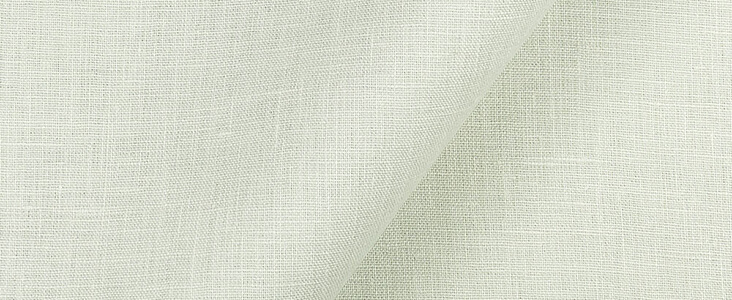
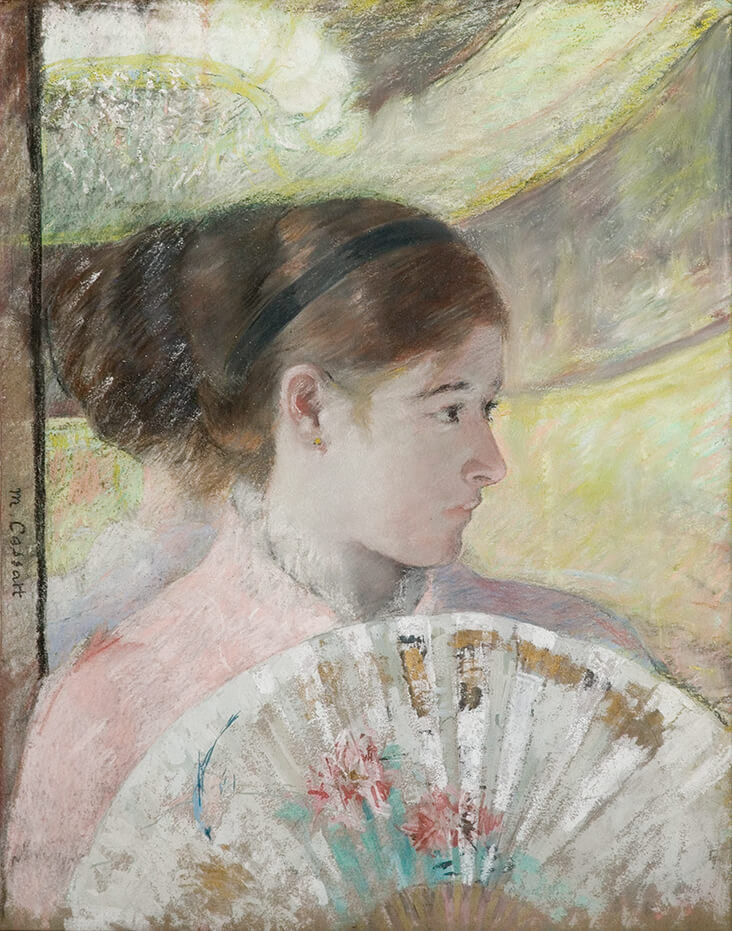
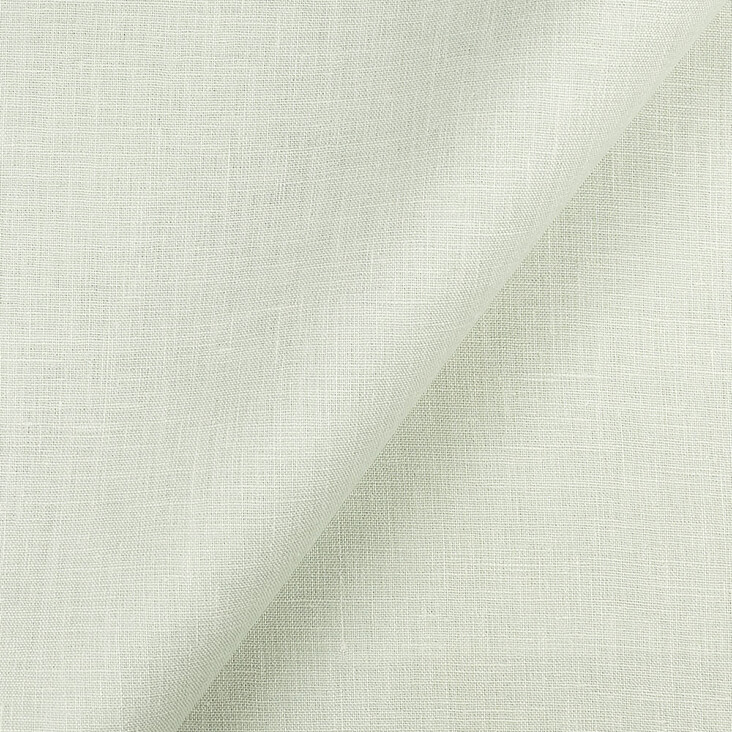
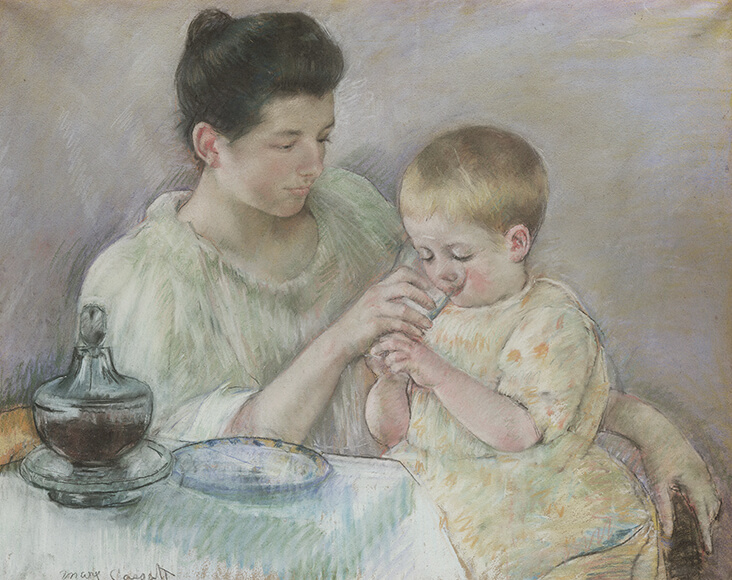
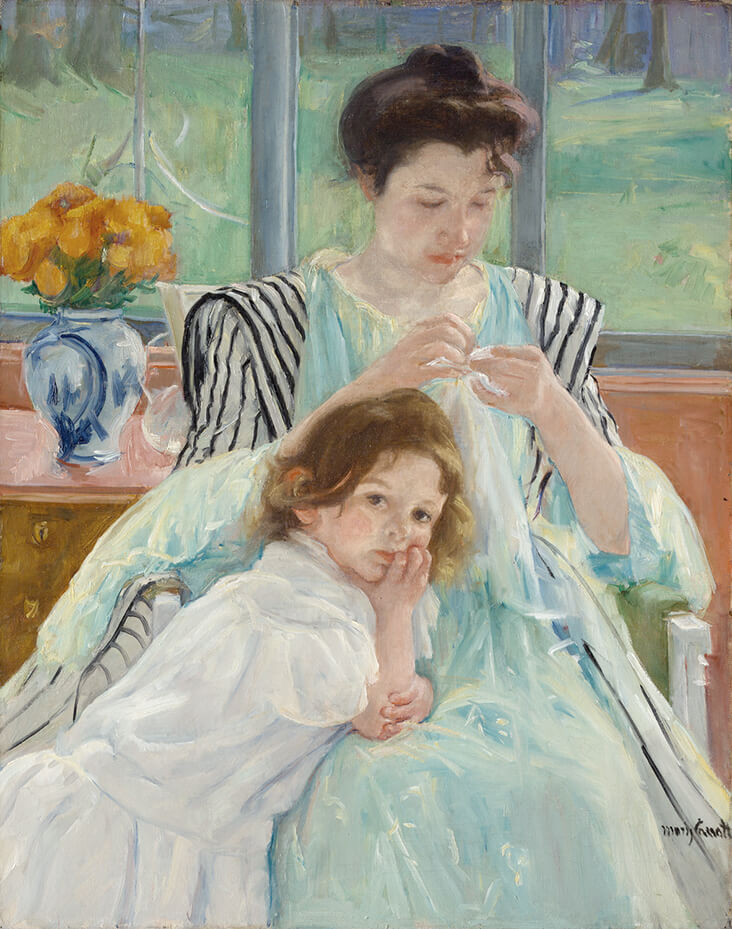














































3 Comments
Melissa Forrey
I appreciate and enjoy the articles connecting artists and color with fabric. Cassat is one of my favorites. Thank you.
Vicki Lang
What a beautiful sunny color. Mary Cassatt’s use in her paintings gives them a sunny day look.
Rosie Lesso
Thank you both so much!